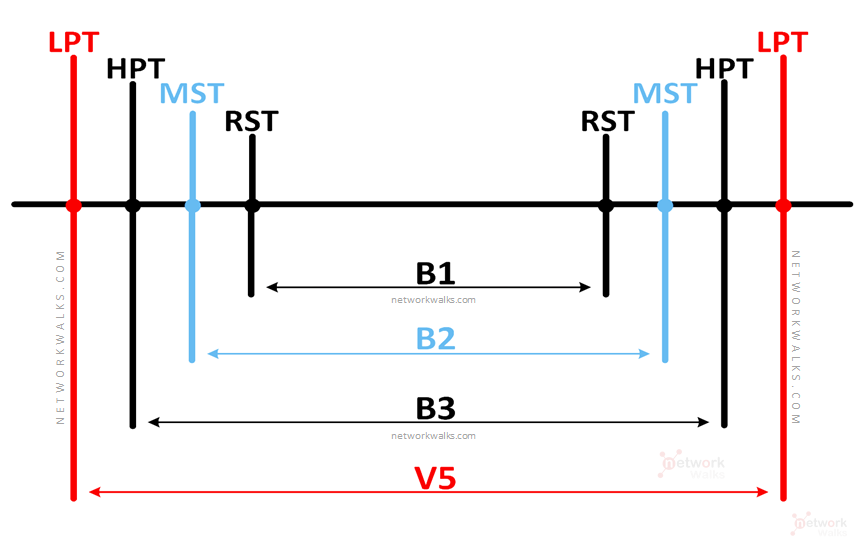 Performance of the transmission system is of crucial importance to communication quality of the whole communication network. Good performance can be achieved through proper control over Bit Error Rate & BERT. The major factors affecting the performance of SDH transmission network includes bit error, jitter and wander.
Performance of the transmission system is of crucial importance to communication quality of the whole communication network. Good performance can be achieved through proper control over Bit Error Rate & BERT. The major factors affecting the performance of SDH transmission network includes bit error, jitter and wander.
So, what are the Bit Errors? Why are they so important to control? Do the Bit errors affect my network performance?
These are some of the questions that every network engineer and optical transmission engineer must know. Let’s dissect these questions & their answers one by one. “Bit Error is the amount of interference and interruptions in reception”. Therefore, bit errors are important for two major reasons. Firstly, it is a key parameter to assess systems that transmit digital data from one location to another. Secondly, it is the error of a single number between receiving and sending data signals.Why Bit Error Rate & BERT Testing is so crucial?
BER is crucial for Ethernet, Gigabit Ethernet, Optical fiber systems and Radio links. The basis of BER are same in all of these systems with minor differences. Therefore, a good knowledge of the Bit Error Rate also enables us to adjust other features of the link like power and bandwidth. BER is important to consider in design & operation for any system that transmits data over a network of some form where noise, interference and phase jitter may cause degradation of the digital signal.Generation and Distribution of Bit Error Rate & BERT
Bit errors are a great harm to IP networks & transmission system because they lower the system stability. Bit errors fall into two major categories in terms of network performance.1. Bit errors due to internal mechanism
Various noise sources, jitter, multiplexer, cross-connection systems and inter-symbol interference causes this type of bit errors. Long term error performance of the system judges this type of error.2. Bit errors due to pulse interference
Electromagnetic interference, equipment fault and transient interference of power supply generates this kind of bit errors. This kind of bit errors usually occurs to the system abruptly in large amount. Long term error performance of the system judges this type of error.ITU-T Standards for Bit Error Rate & BERT
Below are relevant ITU-T recommendations related to Bit Errors, control, design & specifications:G.828
It specifies Bit Error performance event, parameter and indices of CBR (international Constant Bit Rate) synchronous digital channel. Therefore, it is applicable to lower order and higher order paths borne by VC-n and VC-n-Xc. The difference from G.826 is that its index is more strict than that of G.826.G.826
It specifies high bit rate channel Bit Error performance parameter, on the basis of block.G.821
It specifies the Bit Error performance parameter connected with 64k bps, on the basis of bit. In conclusion, the working principle of BER assessment is a bit different from other forms of assessment. BER method assesses the full end to end performance of a system. This includes the transmitter, receiver and the medium between the two. In this way, bit error rate, BER enables the actual performance of a system in operation to be tested. Additionally, Bit errors optimization is critical for stable network operations. To understand the Bit Errors in deep, we need a solid grip on factors that control BER, BER Events, Reporting Points of BER and Testing.How to calculate Bit Error Rate (& BERT)?
Bit Error Rate can be simply calculated using below formula:
Conventional error performance measurement is to measure the error performance of end-to-end connected digital reference circuit of 64kbit/s channel for the whole 27500km distance based on the error conditions of the bits. As the transmission rate of the transmission network is increasing, measurement of system error performance with bit as the unit shows its limitation.
Bit Error Rate & BERT Availability Parameters
Unavailable time
When the BER of the digital signals in any transmission direction of the transmission system is inferior to 10^3 in every second of consecutive 10 seconds, the system will be considered as entering into the unavailable time since the first of the 10 seconds.Available time
When the BER of the digital signals is better than 10^3, in every second of consecutive 10 seconds, the system will be considered as entering into the available time since the first of the 10 seconds.Availability
Availability is the the percentage of available time against the total time. To ensure normal operation, the system must satisfy specific availability indexes.Relationship of Bit Errors & Measurement Points
Below are important points in Transmission systems like SDH & they are very important to understand before we understand that how to measure performance of whole system. The optical synchronous transmission equipment makes an overall system check for bit errors by below sections and layers:- B1 (regenerator section bit error)
- B2 (multiplex section bit error)
- B3 (higher-order path bit error)
- V5 (lower-order path bit error)

Bit Error Performance Events
We usually measure the performance of an SDH or DWDM link by its parameters and events. Below are some of the important Bit Error Performance Events:| Common Bit Error Performance Events | |
| BBE | Background Block Error Ratio |
| FEBBE | Far End Background Block Error |
| ES | Errored Seconds (A second is an errored second if one or more block has an error) |
| FEES | Far End Bit Error |
| SES | Severely Errored Seconds (A specific second during which has more than 30% block errors) |
| FECES | Far End Consecutive Errored Second |
| CSES | Consecutive Severely Errored Second |
| FECSES | Far End Consecutive Severely Errored Second |
| UAS | Unavailable Second |
Errored second (ES) and Errored second rate (ESR)
An ES is a specific second during which one or more block errors occurs. The ratio of total ESs to the total available time during a specified measurement time segment is called ESR.Severely errored second (SES) and severely errored second rate (SESR)
A specific second during which not less than 30% block errors are contained or at least one severe disturbance period (SDP) occurs is called SES.SDP means that during measurement the BER of all consecutive blocks is 10-2 or signal loss occurs in the time segment equivalent to that of at least 4 consecutive blocks or 1ms (take the longer one of the two). The ratio of total SESs to total available time during measuring time segment is called severely errored second rate (SESR). Usually, SES is the burst block error generated by pulse interference, therefore, SESR often reflects the capability of the equipment against interference.Background block error (BBE) and background block error rate (BBER)
The block error with errors appearing in the unavailable time and SES period deducted is called background block error (BBE). The ratio of total BBEs to the total block errors with block errors in the unavailable time and SES period deducted during a specific period of measuring time is called background block error rate (BBER). Continue to part2 of this topic Bit Error Rate & BERT (Part2)Bit Error Rate & BERT (part2)Also check our free Online Quizzes on all IT topics and CCNA, CCNP, CCIE including new Python Automation Programming.
Free Online Quizzes (Best for Cisco CCNA, Huawei HCNA, N+)You can also view free study notes (Cheat sheets) on all IT and Cisco CCNA/CCNP/CCIE topics for long term memory:
Networkwalks Summary CheatsheetsFollow our Facebook Page & YouTube Channel for more updated Cheatsheets & Quizzes:
